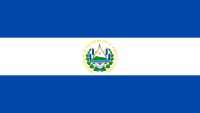 List of Insurance Companies Logos and Names in El Salvador – World Insurance Companies Logos. By clicking on the logos of each insurer, you can find up-to-date details on the different types of coverage policies you needs.
List of Insurance Companies Logos and Names in El Salvador – World Insurance Companies Logos. By clicking on the logos of each insurer, you can find up-to-date details on the different types of coverage policies you needs.
List of Insurance Companies Logos and Names in El Salvador
List of Insurance Companies Logos and Names in El Salvador. Look for and compare insurers to find the best fit for you. By clicking on insurance company logos, you have instant access to up-to-date information about insurance issues.
These can help you in choosing the best insurance, and also, obtain phone numbers, addresses, and prices offered by insurers through the Internet
- All
ASSA
Read MoreASESUISA (SURA): Comprehensive insurance solutions for individuals and families
Read MoreACSA insurance, medical, automobile, life and home.
Read MorePan American Life Insurance Company
Pan-American Life Insurance Group offers life, health, and accident insurance in the USA, including individual health plans, life insurance, and personal accident coverage
Read MoreMAPFRE ASISTENCIA
Read MoreAON Expertise in Risk Capital and Human Capital.
Aon offers various insurance products in the USA, including professional liability, D&O liability, business owners policies, network risk, general liability, life, disability, health, auto, homeowners, and specialty coverage.
Read MoreFind more logos and names of insurance companies in the page Central America, America.
Noticias Today
The Logo of Insurance
The Logo of Insurance. By clicking the logo of each Insurer you have instant access to updated information on insurance issues that can help you in the task of choosing the best insurance, and also, get phone numbers, addresses, and prices, that Insurers offer on the Internet.
List of Names of Insurance Providers In El Salvador
Find out about the logos and names of insurance companies in countries near you in Belize, Central America.
Economy In El Salvador
Compared to other developing countries, El Salvador has experienced relatively low rates of GDP growth. Rates have not risen above the low single digits in nearly two decades – part of a broader environment of macroeconomic instability which the integration of the US dollar has done little to improve. One problem that the Salvadoran economy faces is the inequality in the distribution of income. In 2011, El Salvador had a Gini Coefficient of .485, which, although similar to that of the United States, leaves 37.8% of the population below the poverty line,[8] due to lower aggregate income. The richest 10% of the population receives approximately 15 times the income of the poorest 40%.
As of 3 November 2014, the IMF reports, official reserve assets to be $3.192B. Foreign currency reserves (in convertible foreign currencies) are $2.675B. Securities are $2.577B with total currency and deposits at $94.9M. Securities with other national central banks (BIS and IMF) are $81.10M. Securities with banks headquartered outside the reporting country $13.80M. SDRs are at $245.5M. Gold reserves (including gold deposits and, if appropriate, gold swapped) reported at $271.4M with volume in millions of fine Troy ounces at $200k. Other reserve assets are financial derivatives valued at $2.7M.
Having this hard currency buffer to work with, the Salvadoran Government undertook a monetary integration plan beginning 1 January 2001, by which the U.S. The dollar became legal tender alongside the colón, and all formal accounting was undertaken in U.S. Dollars. This way, the government has formally limited its possibility of implementing open market monetary policies to influence short term variables in the economy. Since 2004, the colón stopped circulating and is now never used in the country for any type of transaction; however, some stores still have prices in both colons and U.S., dollars. In general, people were unhappy with the shift from the colón to the U.S. Dollar, because wages are still the same, but the price of everything increased. Some economists claim this rise in prices would have been caused by inflation regardless even had the shift not been made. Some economists also contend that now, according to Gresham’s Law, a reversion to the colón would be disastrous to the economy.
Some banks, however, claim that they still do some transactions en colonies, keeping this change from being unconstitutional.
The change to the dollar also precipitated a trend toward lower interest rates in El Salvador, helping many to secure credit in order to buy a house or a car; over time, displeasure with the change has largely disappeared, though the issue resurfaces as a political tool when elections are on the horizon.
From Wikipedia.
El Salvador, Central America – World Insurance Companies Logos.

